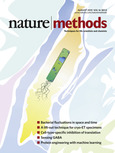
The PLUMED consortium: M. Bonomi, G. Bussi, C. Camilloni et al.: Promoting transparency and reproducibility in enhanced molecular simulations, NATURE METHODS vol. 16, iss. 8, pp. 670-673, 2019.
DOI: 10.1002/10.1038/s41592-019-0506-8, IF = 28.467
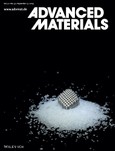
G. Zoppellaro, A. Bakandritsos, J. Tuček, P. Błoński, T. Susi, P. Lazar, Z. Bad'ura, T. Steklý, A. Opletalová, M. Otyepka and R. Zbořil, "Microwave Energy Drives “On–Off–On” Spin‐Switch Behavior in Nitrogen‐Doped Graphene," ADVANCED MATERIALS, vol. 31, iss. 37, 1902587, 2019.
DOI: 10.1002/adma.201902587, IF = 25.809
Abstract: The established application of graphene in organic/inorganic spin‐valve spintronic assemblies is as a spin‐transport channel for spin‐polarized electrons injected from ferromagnetic substrates. To generate and control spin injection without such substrates, the graphene backbone must be imprinted with spin‐polarized states and itinerant‐like spins. Computations suggest that such states should emerge in graphene derivatives incorporating pyridinic nitrogen. The synthesis and electronic properties of nitrogen‐doped graphene (N content: 9.8%), featuring both localized spin centers and spin‐containing sites with itinerant electron properties, are reported. This material exhibits spin‐switch behavior (on–off–on) controlled by microwave irradiation at X‐band frequency. This phenomenon may enable the creation of novel types of switches, filters, and spintronic devices using sp2‐only 2D systems.

A. Bakandritsos, R. G. Kadam, P. Kumar, G. Zoppellaro, M. Medved', J. Tuček, T. Montini, O. Tomanec, P. Andrýsková, B. Drahoš, R. S. Varma, M. Otyepka, M. B. Gawande, P. Fornasiero and R. Zbořil, "Mixed-Valence Single-Atom Catalyst Derived from Functionalized Graphene," ADVANCED MATERIALS, vol. 31, iss. 17, pp. 1900323, 2019.
DOI: 10.1002/adma.201900323 IF = 25.809
Abstract: Single‐atom catalysts (SACs) aim at bridging the gap between homogeneous and heterogeneous catalysis. The challenge is the development of materials with ligands enabling coordination of metal atoms in different valence states, and preventing leaching or nanoparticle formation. Graphene functionalized with nitrile groups (cyanographene) is herein employed for the robust coordination of Cu(II) ions, which are partially reduced to Cu(I) due to graphene‐induced charge transfer. Inspired by nature's selection of Cu(I) in enzymes for oxygen activation, this 2D mixed‐valence SAC performs flawlessly in two O2‐mediated reactions: the oxidative coupling of amines and the oxidation of benzylic CH bonds toward high‐value pharmaceutical synthons. High conversions (up to 98%), selectivities (up to 99%), and recyclability are attained with very low metal loadings in the reaction. The synergistic effect of Cu(II) and Cu(I) is the essential part in the reaction mechanism. The developed strategy opens the door to a broad portfolio of other SACs via their coordination to various functional groups of graphene, as demonstrated by successful entrapment of FeIII/FeII single atoms to carboxy‐graphene.
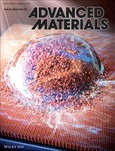
K. Jayaramulu, F. Geyer, A. Schneemann, Š. Kment, M. Otyepka, R. Zboril, D. Vollmer, R.A. Fischer: Hydrophobic Metal–Organic Frameworks, ADVANCED MATERIALS, vol. 31, iss. 32, p. 1900820, 2019.
DOI: 10.1002/adma.201900820, IF = 25.809
Abstract: Metal–organic frameworks (MOFs) have diverse potential applications in catalysis, gas storage, separation, and drug delivery because of their nanoscale periodicity, permanent porosity, channel functionalization, and structural diversity. Despite these promising properties, the inherent structural features of even some of the best‐performing MOFs make them moisture‐sensitive and unstable in aqueous media, limiting their practical usefulness. This problem could be overcome by developing stable hydrophobic MOFs whose chemical composition is tuned to ensure that their metal–ligand bonds persist even in the presence of moisture and water. However, the design and fabrication of such hydrophobic MOFs pose a significant challenge. Reported syntheses of hydrophobic MOFs are critically summarized, highlighting issues relating to their design, characterization, and practical use. First, wetting of hydrophobic materials is introduced and the four main strategies for synthesizing hydrophobic MOFs are discussed. Afterward, critical challenges in quantifying the wettability of these hydrophobic porous surfaces and solutions to these challenges are discussed. Finally, the reported uses of hydrophobic MOFs in practical applications such as hydrocarbon storage/separation and their use in separating oil spills from water are summarized. Finally, the state of the art is summarized and promising future developments of hydrophobic MOFs are highlighted.
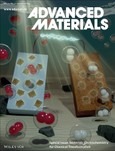
L. Mascaretti, A. Dutta, Š. Kment, V. M. Shalaev, A. Boltasseva, R. Zbořil, and A. Naldoni, "Plasmon-enhanced photoelectrochemical water splitting for efficient renewable energy storage," ADVANCED MATERIALS, vol. 31, iss. 31, p. 1805513, 2019.
DOI: 10.1002/adma.201805513, IF = 25.809
Abstract: Photoelectrochemical (PEC) water splitting is a promising approach for producing hydrogen without greenhouse gas emissions. Despite decades of unceasing efforts, the efficiency of PEC devices based on earth‐abundant semiconductors is still limited by their low light absorption, low charge mobility, high charge‐carrier recombination, and reduced diffusion length. Plasmonics has recently emerged as an effective approach for overcoming these limitations, although a full understanding of the involved physical mechanisms remains elusive. Here, the reported plasmonic effects are outlined, such as resonant energy transfer, scattering, hot electron injection, guided modes, and photonic effects, as well as the less investigated catalytic and thermal effects used in PEC water splitting. In each section, the fundamentals are reviewed and the most representative examples are discussed, illustrating possible future developments for achieving improved efficiency of plasmonic photoelectrodes.
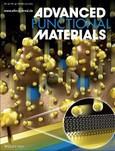
S. V. Talande, A. Bakandritsos, P. Jakubec, O. Malina, R. Zbořil and J. Tuček, "Densely Functionalized Cyanographene Bypasses Aqueous Electrolytes and Synthetic Limitations Toward Seamless Graphene/β‐FeOOH Hybrids for Supercapacitors," ADVANCED FUNCTIONAL MATERIALS, vol. 29, iss. 51, p. 1906998, 2019.
DOI: 10.1002/adfm.201906998, IF = 15.621
Abstract: Supercapacitors are a promising energy storage technology owing to their unparalleled power and lifetime. However, to meet the continuously rising demands of energy storage, they must be equipped with higher energy densities. For this purpose, the seamless integration of metal oxides on carbon matrices, such as iron oxides/oxyhydroxides, has been pursued through hydrothermal, atomic layer and electro‐deposition methods directly on current collectors. Nevertheless, such methods present limited compatibility with commercial paste‐coating processes on the current collectors. Furthermore, iron oxides/oxyhydroxides lack conductivity and are hydrophilic, operating with low‐voltage aqueous electrolytes, limiting their power and energy and requiring corrosion‐resistant H2O current collectors. To mitigate these challenges, a seamless and paste‐ready material is successfully developed through a 15 min wet‐chemical method, via the coordination of ultrasmall β‐FeOOH (akaganéite) nanoparticles to the nitrile groups of a covalent graphene derivative. Endowed with graphene‐like impedance response and very high wettability in organic electrolytes, combined high power and energy densities are obtained, with respect to the total mass of both electrode materials and current collectors, overcoming the identified challenges. This offers future prospects for the exploration of alternative molecular handles for improved interfaces and their application in different energy‐storage chemistries.
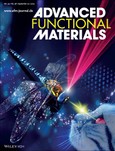
K. Jayaramulu, D. P. Dubal, A. Schneemann, V. Ranc, C. Perez‐Reyes, J. Stráská, Š. Kment, M. Otyepka, R. A. Fischer and R. Zbořil, "Shape‐Assisted 2D MOF/Graphene Derived Hybrids as Exceptional Lithium‐Ion Battery Electrodes," ADVANCED FUNCTIONAL MATERIALS, vol. 29, iss. 38, p. 1902539, 2019.
DOI: 10.1002/adfm.201902539, IF = 15.621
Abstract: Herein, a novel polymer‐templated strategy is described to obtain 2D nickel‐based MOF nanosheets using Ni(OH)2, squaric acid, and polyvinylpyrrolidone (PVP), where PVP has a dual role as a structure‐directing agent, as well as preventing agglomeration of the MOF nanosheets. Furthermore, a scalable method is developed to transform the 2D MOF sheets to Ni7S6/graphene nanosheet (GNS) heterobilayers by in situ sulfidation using thiourea as a sulfur source. The Ni7S6/GNS composite shows an excellent reversible capacity of 1010 mAh g−1 at 0.12 A g−1 with a Coulombic efficiency of 98% capacity retention. The electrochemical performance of the Ni7S6/GNS composite is superior not only to nickel sulfide/graphene‐based composites but also to other metal disulfide–based composite electrodes. Moreover, the Ni7S6/GNS anode exhibits excellent cycle stability (≈95% capacity retention after 2000 cycles). This outstanding electrochemical performance can be attributed to the synergistic effects of Ni7S6 and GNS, where GNS serves as a conducting matrix to support Ni7S6 nanosheets while Ni7S6 prevents restacking of GNS. This work opens up new opportunities in the design of novel functional heterostructures by hybridizing 2D MOF nanosheets with other 2D nanomaterials for electrochemical energy storage/conversion applications.
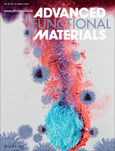
D. P. Dubal, K. Jayaramulu, J. Sunil, Š. Kment, P. Gomez-Romero, C. Narayana, R. Zbořil, and R. A. Fischer, "Metal–Organic Framework (MOF) Derived Electrodes with Robust and Fast Lithium Storage for Li-Ion Hybrid Capacitors," ADVANCED FUNCTIONAL MATERIALS, vol. 29, iss. 19, pp. 1900532, 2019.
DOI: 10.1002/adfm.201900532, IF = 15.621
Abstract: Hybrid metal–organic frameworks (MOFs) demonstrate great promise as ideal electrode materials for energy‐related applications. Herein, a well‐organized interleaved composite of graphene‐like nanosheets embedded with MnO2 nanoparticles (MnO2@C‐NS) using a manganese‐based MOF and employed as a promising anode material for Li‐ion hybrid capacitor (LIHC) is engineered. This unique hybrid architecture shows intriguing electrochemical properties including high reversible specific capacity 1054 mAh g−1 (close to the theoretical capacity of MnO2, 1232 mAh g−1) at 0.1 A g−1 with remarkable rate capability and cyclic stability (90% over 1000 cycles). Such a remarkable performance may be assigned to the hierarchical porous ultrathin carbon nanosheets and tightly attached MnO2 nanoparticles, which provide structural stability and low contact resistance during repetitive lithiation/delithiation processes. Moreover, a novel LIHC is assembled using a MnO2@C‐NS anode and MOF derived ultrathin nanoporous carbon nanosheets (derived from other potassium‐based MOFs) cathode materials. The LIHC full‐cell delivers an ultrahigh specific energy of 166 Wh kg−1 at 550 W kg−1 and maintained to 49.2 Wh kg−1 even at high specific power of 3.5 kW kg−1 as well as long cycling stability (91% over 5000 cycles). This work opens new opportunities for designing advanced MOF derived electrodes for next‐generation energy storage devices.
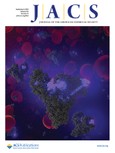
K. Kratzl, T. Kratky, S. Günther, O. Tomanec, R. Zbořil, J. Michalička, J. M. Macak, M. Cokoja and R. A. Fischer, "Generation and Stabilization of Small Platinum Clusters Pt12±x Inside a Metal–Organic Framework," JOURNAL OF THE AMERICAN CHEMICAL SOCIETY, vol. 141, iss. 35, pp. 13962-13969, 2019.
DOI: 10.1021/jacs.9b07083, IF = 14.695
Abstract: The generation and matrix stabilization of ligand-free, small platinum nanoclusters (NCs) Pt12±x is presented. The metal–organic framework-template approach is based on encapsulating CO-ligated, atom-precise Pt9 Chini clusters [{Pt3(CO)6}3]2– into the zeolitic imidazolate framework ZIF-8. The selective formation of the air-stable inclusion compound [NBu4]2[{Pt3(CO)6}4]@ZIF-8 of defined atomicity Pt12 and with Pt loadings of 1–20 wt % was monitored by UV/vis and IR spectroscopy and was confirmed by high-resolution transmission electron microscopy (HR-TEM), high-angle annular dark-field scanning transmission electron microscopy (HAADF-STEM), X-ray photoelectron spectroscopy (XPS), and powder X-ray diffraction (PXRD). Thermally induced decarbonylation at 200 °C yields the composite material Ptn@ZIF-8 with a cluster atomicity n close to 12, irrespective of the Pt loading. The PtNCs retain their size even during annealing at 300 °C for 24 h and during catalytic hydrogenation of 1-hexene at 25 °C in the liquid phase. The Ptn@ZIF-8 material can conveniently be used for storing small PtNCs and their further processing. Removal of the protective ZIF-8 matrix under acidic conditions and transfer of the PtNCs to carbon substrates yields defined aggregation to small Pt nanoparticles (1.14 ± 0.35 nm, HR-TEM), which have previously shown exceptional performance in the electrocatalytic oxygen reduction reaction (ORR).
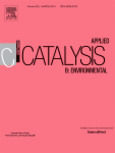
I. S. Pieta, A. Rathi, P. Pieta, R. Nowakowski, M. Hołdynski, M. Pisarek, A. Kaminska, M. B. Gawande and R. Zboril, "Electrocatalytic methanol oxidation over Cu, Ni and bimetallic Cu-Ni nanoparticles supported on graphitic carbon nitride," APPLIED CATALYSIS B: ENVIRONMENTAL, vol. 244, pp. 272-283, 2019.
DOI: 10.1016/j.apcatb.2018.10.072, IF = 14.229
Abstract: Ni, Cu and Cu–Ni nanostructures have been fabricated and homogeneously embedded on ultrathin two-dimensional (2D) carbon nitride (g-C3N4), and the surface morphology and composition of the resulting hybrid nanostructures were studied by XRD, TEM, HRTEM-elemental mapping, Raman spectroscopy and XPS. The new hierarchical hetero-structures dropcasted on GC anodes have been visualised by SEM and their catalytic performance have been examined in methanol electrooxidation reaction (MOR) under alkaline conditions. Nanosized Ni particles dispersed finely over g-C3N4 are very active electrocatalysts with MOR onset at potential 0.35 V and charge transfer resistance 0.12 kΩ. The stability of modyfied GC electrodes, examined under chronoamperometric conditions showed that for electrode loading with 4% (wt. %) of NiO the stable current density ca. 36 A g−1 (12 A cm2) was obtained during whole experiment (up to 160 min). For all catalyst studied the curent density obtained during MOR reaction was enhanced when electrode was iluminated by UV light λ∼400 nm, and the highest value were obtained for 4% Ni/CN catalyst ca. 127 A g−1 (22 A cm2). The Cu incorporation in the hybrid material evoke loss of activity mostly due to Cu+ irreversible reduction/oxidation to Cu° and Cu2+, CuO segregation and influencing electron transfer process which results in the increasing in the redox potential. These results represent an important step towards light-enhanced electro-reactive systems and sensors in which heterojunction formation can facilitate electron-hole separation and enable more efficient energy transfer.

Y. Zuo, D. Rao, S. Ma, T. Li, Y. H. Tsang, S. Kment and Y. Chai, "Valence Engineering via Dual-Cation and Boron Doping in Pyrite Selenide for Highly Efficient Oxygen Evolution," ACS NANO, Article in press, 2019.
DOI: 10.1021/acsnano.9b04956, IF = 13.903
Abstract: Valence engineering has been proved an effective approach to modify the electronic property of a catalyst and boost its oxygen evolution reaction (OER) activity, while the limited number of elements restricts the structural diversity and the active sites. Also, the catalyst performance and stability are greatly limited by cationic dissolution, ripening, or crystal migration in a catalytic system. Here we employed a widely used technique to fabricate heteroepitaxial pyrite selenide through dual-cation substitution and a boron dopant to achieve better activity and stability. The overpotential of Ni-pyrite selenide catalyst is decreased from 543 mV to 279.8 mV at 10 mA cm–2 with a Tafel slope from 161 to 59.5 mV dec–1. Our theoretical calculations suggest both cation and boron doping can effectively optimize adsorption energy of OER intermediates, promote the charge transfer among the heteroatoms, and improve their OER property. This work underscores the importance of modulating surface electronic structure with the use of multiple elements and provides a general guidance on the minimization of activity loss with valence engineering.
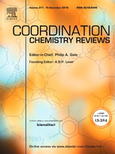
M. Nasrollahzadeh, M. Sajjadi, M. Shokouhimehr and R. S. Varma, "Recent developments in palladium (nano)catalysts supported on polymers for selective and sustainable oxidation processes," COORDINATION CHEMISTRY REVIEWS, vol. 397, iss. , pp. 54-75, 2019.
DOI: 10.1016/j.ccr.2019.06.010, IF = 13.476
Abstract: This review describes the recent advances in the fabrication, characterization and applications of palladium nanoparticles (Pd NPs)/complexes supported on polymers. Nanostructured materials and NPs of various natures, shapes and sizes in combination with polymers, provide unique physicochemical properties and significant potential applications. An overview in catalysis encompassing the preparation of polymer-supported Pd nanocatalysts and Pd complexes for the oxidation of alcohols, olefins, alkenes, carbon monoxide, etc. is presented. Heterogeneous oxidation catalysis, a vital tool in chemical synthesis and transformations, includes the development of various synthetic strategies for the fabrication of Pd-based catalysts; eminent role played by polymer supports in the morphological and structural properties of the ensuing catalysts, is highlighted.

P. Štarha and Z. Trávníček: Non-platinum complexes containing releasable biologically active ligands, COORDINATION CHEMISTRY REVIEWS vol. 395, pp. 130-145, 2019.
DOI: 10.1016/j.ccr.2019.06.001, IF = 13.476
Abstract: Since the discovery of anticancer activity of cisplatin and other transition metal complexes, a lot of compounds have been reported as containing ligand(s) bearing its(their) own biological activity. Nowadays, the complexes containing releasable bioactive ligand(s), for which several terms (e.g., multi-targeted, multi-action or multi-modal) have been introduced, represent one of the hottest topics for the bioinorganic chemists. Herein we focused on rationally designed cytotoxic complexes of platinum-group metals, namely ruthenium, rhodium, palladium, osmium and iridium, which contain releasable bioactive ligand(s). Because a concept of multi-targeted complexes is based on a release and subsequent joint biological effect of multiple species, we concentrate especially on complexes whose fate under the (pseudo)physiological conditions is provably or most likely connected with a release of bioactive ligand(s)/substituent(s) and cytotoxic metal-containing species. Thus, the simultaneous action of the released species ensures various biological profits, such as higher cytotoxic activity, cytotoxicity at different cells (connected with the ability to overcome resistance) or modified processes connected with the mode of action, as compared with the initial complexes without bioactive ligand(s).

P.Štarha, J.Vančo and Z.Trávníček, "Platinum iodido complexes: A comprehensive overview of anticancer activity and mechanisms of action," COORDINATION CHEMISTRY REVIEWS vol. 380, pp. 103-135, 2019.
DOI: 10.1016/j.ccr.2018.09.017, IF = 13.476
Abstract: Platinum iodido complexes have long been recognized as synthetic intermediates of various platinum complexes (e.g., chlorido or carboxylato), including the world-wide used platinum-based anticancer drugs cisplatin, carboplatin and oxaliplatin. At the same time, platinum iodido complexes have been overlooked by bioinorganic chemists, because several pioneer works deemed the iodido ligand as unsuitable for the development of novel platinum-based metallotherapeutics. This was because most of platinum iodido complexes were identified as biologically and pharmacologically non-prospective as compared with the chlorido analogues. More recently, several research teams have developed various types of platinum iodido complexes as substances possessing the combination of promising chemical, physical, and especially biological properties. In particular, a number of platinum iodido complexes showed higher activity than their chlorido analogues and they exceeded even the activity of the conventional platinum-based drugs. Additionally, a lot of results have implied that relevant differences exist in the mechanism of action between platinum iodido agents, and their chlorido analogues and clinically-used platinum complexes

J. Su, M. Telychko, P. Hu, G. Macam, P. Mutombo, H. Zhang, Y. Bao, F. Cheng, Z. Huang, Z. Qiu, S. J. R. Tan, H. Lin, P. Jelínek, F. Chuang, J. Wu and J. Lu, F.-C. Chuang and J. Wu, "Atomically precise bottom-up synthesis of π-extended [5]triangulene," SCIENCE ADVANCES, vol. 5, iss. 7, p. eaav7717, 2019.
DOI: 10.1126/sciadv.aav7717, IF = 12.804
Abstract: The zigzag-edged triangular graphene molecules (ZTGMs) have been predicted to host ferromagnetically coupled edge states with the net spin scaling with the molecular size, which affords large spin tunability crucial for next-generation molecular spintronics. However, the scalable synthesis of large ZTGMs and the direct observation of their edge states have been long-standing challenges because of the molecules’ high chemical instability. Here, we report the bottom-up synthesis of π-extended [5]triangulene with atomic precision via surface-assisted cyclodehydrogenation of a rationally designed molecular precursor on metallic surfaces. Atomic force microscopy measurements unambiguously resolve its ZTGM-like skeleton consisting of 15 fused benzene rings, while scanning tunneling spectroscopy measurements reveal edge-localized electronic states. Bolstered by density functional theory calculations, our results show that [5]triangulenes synthesized on Au(111) retain the open-shell π-conjugated character with magnetic ground states.
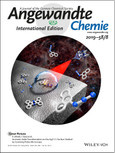
J. Hellerstedt, A. Cahlík, O. Stetsovych, M. Švec, T. K. Shimizu, P. Mutombo, J. Klívar, I. G. Stará, P. Jelínek and I. Starý, "Aromatic Azide Transformation on the Ag(111) Surface Studied by Scanning Probe Microscopy," ANGEWANDTE CHEMIE INTERNATIONAL EDITION, vol. 58, iss. 8, pp. 2266-2271, 2019.
DOI: 10.1002/anie.201812334, IF = 12.257
Abstract: Chemical transformation of 9‐azidophenanthrene on the Ag(111) surface was studied by nc‐AFM in UHV. High‐resolution imaging supported by first‐principle calculations revealed the structure of the final products that originated from a common and elusive 9‐phenanthryl nitrenoid intermediate chemisorbed on the Ag(111) surface. A formal nitrene insertion into the C−H bond along with its dimerisation and hydrogenation were identified as main reaction channels. Thus, the ability of aryl azides to form covalent σ‐ and π‐bonds between their transformation products on a solid surface was demonstrated at a single‐molecule level.
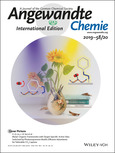
A. Sánchez-Grande, B. de la Torre, J. Santos, B. Cirera, K. Lauwaet, T. Chutora, S. Edalatmanesh, P. Mutombo, J. Rosen, R. Zbořil, R. Miranda, J. Björk, P. Jelínek, N. Martín and D. Écija," ANGEWANDTE CHEMIE INTERNATIONAL EDITION vol. 58, iss. 20, pp. 6559-6563, 2019.
DOI: 10.1002/anie.201814154, IF = 12.257
Abstract: Engineering low‐band‐gap π‐conjugated polymers is a growing area in basic and applied research. The main synthetic challenge lies in the solubility of the starting materials, which precludes advancements in the field. Here, we report an on‐surface synthesis protocol to overcome such difficulties and produce poly(p‐anthracene ethynylene) molecular wires on Au(111). To this aim, a quinoid anthracene precursor with =CBr2 moieties is deposited and annealed to 400 K, resulting in anthracene‐based polymers. High‐resolution nc‐AFM measurements confirm the nature of the ethynylene‐bridge bond between the anthracene moieties. Theoretical simulations illustrate the mechanism of the chemical reaction, highlighting three major steps: dehalogenation, diffusion of surface‐stabilized carbenes, and homocoupling, which enables the formation of an ethynylene bridge. Our results introduce a novel chemical protocol to design π‐conjugated polymers based on oligoacene precursors and pave new avenues for advancing the emerging field of on‐surface synthesis.
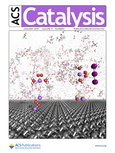
A. Naldoni, M. Altomare, G. Zoppellaro, N. Liu, Š. Kment, R. Zbořil and P. Schmuki, "Photocatalysis with Reduced TiO2: From Black TiO2 to Cocatalyst-Free Hydrogen Production," ACS CATALYSIS, vol. 9, iss. 1, pp. 345-364, 2019.
DOI: 10.1021/acscatal.8b04068, IF = 12.221
Abstract: Black TiO2 nanomaterials have recently emerged as promising candidates for solar-driven photocatalytic hydrogen production. Despite the great efforts to synthesize highly reduced TiO2, it is apparent that intermediate degree of reduction (namely, gray titania) brings about the formation of peculiar defective catalytic sites enabling cocatalyst-free hydrogen generation. A precise understanding of the structural and electronic nature of these catalytically active sites is still elusive, as well as the fundamental structure–activity relationships that govern formation of crystal defects, increased light absorption, charge separation, and photocatalytic activity. In this Review, we discuss the basic concepts that underlie an effective design of reduced TiO2 photocatalysts for hydrogen production such as (i) defects formation in reduced TiO2, (ii) analysis of structure deformation and presence of unpaired electrons through electron paramagnetic resonance spectroscopy, (iii) insights from surface science on electronic singularities due to defects, and (iv) the key differences between black and gray titania, that is, photocatalysts that require Pt-modification and cocatalyst-free photocatalytic hydrogen generation. Finally, future directions to improve the performance of reduced TiO2 photocatalysts are outlined.

K. C. Suddala, I. R. Price, S. S. Dandpat, M. Janeček, P. Kührová, J. Šponer, P. Banáš, A. Ke and N. G. Walter, "Local-to-global signal transduction at the core of a Mn2+ sensing riboswitch," NATURE COMMUNICATIONS, vol. 10, iss. 1, pp. , 2019.
DOI: 10.1038/s41467-019-12230-5, IF = 11.878
Abstract: The widespread Mn2+-sensing yybP-ykoY riboswitch controls the expression of bacterial Mn2+ homeostasis genes. Here, we first determine the crystal structure of the ligand-bound yybP-ykoY riboswitch aptamer from Xanthomonas oryzae at 2.96 Å resolution, revealing two conformations with docked four-way junction (4WJ) and incompletely coordinated metal ions. In >100 µs of MD simulations, we observe that loss of divalents from the core triggers local structural perturbations in the adjacent docking interface, laying the foundation for signal transduction to the regulatory switch helix. Using single-molecule FRET, we unveil a previously unobserved extended 4WJ conformation that samples transient docked states in the presence of Mg2+. Only upon adding sub-millimolar Mn2+, however, can the 4WJ dock stably, a feature lost upon mutation of an adenosine contacting Mn2+ in the core. These observations illuminate how subtly differing ligand preferences of competing metal ions become amplified by the coupling of local with global RNA dynamics.

K. M. Górecka, M. Krepl, A. Szlachcic, J. Poznański, J. Šponer and M. Nowotny, "RuvC uses dynamic probing of the Holliday junction to achieve sequence specificity and efficient resolution," NATURE COMMUNICATIONS, vol. 10, 4102, 2019.
DOI: 10.1038/s41467-019-11900-8, IF = 11.878
Abstract: Holliday junctions (HJs) are four-way DNA structures that occur in DNA repair by homologous recombination. Specialized nucleases, termed resolvases, remove (i.e., resolve) HJs. The bacterial protein RuvC is a canonical resolvase that introduces two symmetric cuts into the HJ. For complete resolution of the HJ, the two cuts need to be tightly coordinated. They are also specific for cognate DNA sequences. Using a combination of structural biology, biochemistry, and a computational approach, here we show that correct positioning of the substrate for cleavage requires conformational changes within the bound DNA. These changes involve rare high-energy states with protein-assisted base flipping that are readily accessible for the cognate DNA sequence but not for non-cognate sequences. These conformational changes and the relief of protein-induced structural tension of the DNA facilitate coordination between the two cuts. The unique DNA cleavage mechanism of RuvC demonstrates the importance of high-energy conformational states in nucleic acid readouts.

M. Moro-Lagares, R. Korytár, M. Piantek, R. Robles, N. Lorente, J. I. Pascual, M. R. Ibarra and D. Serrate, "Real space manifestations of coherent screening in atomic scale Kondo lattices," NATURE COMMUNICATIONS, vol. 10, p. 2211, 2019.
DOI: 10.1038/s41467-019-10103-5, IF = 11.878
Abstract: The interaction among magnetic moments screened by conduction electrons drives quantum phase transitions between magnetically ordered and heavy-fermion ground states. Here, starting from isolated magnetic impurities in the Kondo regime, we investigate the formation of the finite size analogue of a heavy Fermi liquid. We build regularly-spaced chains of Co adatoms on a metallic surface by atomic manipulation. Scanning tunneling spectroscopy is used to obtain maps of the Kondo resonance intensity with sub-atomic resolution. For sufficiently small interatomic separation, the spatial distribution of Kondo screening does not coincide with the position of the adatoms. It also develops enhancements at both edges of the chains. Since we can rule out any other interaction between Kondo impurities, this is explained in terms of the indirect hybridization of the Kondo orbitals mediated by a coherent electron gas, the mechanism that causes the emergence of heavy quasiparticles in the thermodynamic limit.

M. W. H. Hoorens, M. Medved’, A. D. Laurent, M. Di Donato, S. Fanetti, L. Slappendel, M. Hilbers, B. L. Feringa, W. Jan Buma and W. Szymanski, "Iminothioindoxyl as a molecular photoswitch with 100 nm band separation in the visible range," NATURE COMMUNICATIONS, vol. 10, p. 2390, 2019.
DOI: 10.1038/s41467-019-10251-8, IF = 11.878
Abstract: Light is an exceptional external stimulus for establishing precise control over the properties and functions of chemical and biological systems, which is enabled through the use of molecular photoswitches. Ideal photoswitches are operated with visible light only, show large separation of absorption bands and are functional in various solvents including water, posing an unmet challenge. Here we show a class of fully-visible-light-operated molecular photoswitches, Iminothioindoxyls (ITIs) that meet these requirements. ITIs show a band separation of over 100 nm, isomerize on picosecond time scale and thermally relax on millisecond time scale. Using a combination of advanced spectroscopic and computational techniques, we provide the rationale for the switching behavior of ITIs and the influence of structural modifications and environment, including aqueous solution, on their photochemical properties. This research paves the way for the development of improved photo-controlled systems for a wide variety of applications that require fast responsive functions.
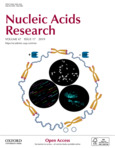
P. Stadlbauer, P. Kührová, L. Vicherek, P. Banáš, M. Otyepka, L. Trantírek and J. Šponer, "Parallel G-triplexes and G-hairpins as potential transitory ensembles in the folding of parallel-stranded DNA G-Quadruplexes," NUCLEIC ACIDS RESEARCH, vol. 47, iss. 14, pp. 7276-7293, 2019.
DOI: 10.1093/nar/gkz610, IF = 11.147
Abstract: Guanine quadruplexes (G4s) are non-canonical nucleic acids structures common in important genomic regions. Parallel-stranded G4 folds are the most abundant, but their folding mechanism is not fully understood. Recent research highlighted that G4 DNA molecules fold via kinetic partitioning mechanism dominated by competition amongst diverse long-living G4 folds. The role of other intermediate species such as parallel G-triplexes and G-hairpins in the folding process has been a matter of debate. Here, we use standard and enhanced-sampling molecular dynamics simulations (total length of ∼0.9 ms) to study these potential folding intermediates. We suggest that parallel G-triplex per se is rather an unstable species that is in local equilibrium with a broad ensemble of triplex-like structures. The equilibrium is shifted to well-structured G-triplex by stacked aromatic ligand and to a lesser extent by flanking duplexes or nucleotides. Next, we study propeller loop formation in GGGAGGGAGGG, GGGAGGG and GGGTTAGGG sequences. We identify multiple folding pathways from different unfolded and misfolded structures leading towards an ensemble of intermediates called cross-like structures (cross-hairpins), thus providing atomistic level of description of the single-molecule folding events. In summary, the parallel G-triplex is a possible, but not mandatory short-living (transitory) intermediate in the folding of parallel-stranded G4.
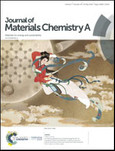
M. Malaki, A. Maleki and R. S. Varma, "MXenes and ultrasonication," JOURNAL OF MATERIALS CHEMISTRY A, vol. 7, iss. 18, pp. 10843-10857, 2019.
DOI: 10.1039/c9ta01850f, IF = 10.733
Abstract: MXenes, 2D transition metal carbides/nitrides, with superior electrical, optical, and mechanical properties have been a recent discovery and have already been deployed in a variety of fields such as batteries, composites, sensors and medical devices. Delamination and dispersion of MXene flakes into mono- or few-layered sheets is one of the most important steps while producing MXenes since the flakes with single or few layers, large lateral size, few defects as well as good exfoliation and distribution are usually demanded in this ever-growing domain. Ultrasonication is a primary tool in delaminating, separating and exfoliating MXene sheets with the prowess to dramatically accelerate the process and produce a larger fraction of high-quality 2D sheets. This mini review discusses the recent advancements in sonochemical synthesis of MXene materials starting with the sonication basics, intricacies of the underlying physics and mechanisms, different sonicator settings, and finally focusing on the key effects and parameters that control the defect, size, morphology, and surface properties and the synthesis time of ensuing MXenes. It is believed that the sonochemistry of MXene materials is an emerging area with ample opportunities and lots of potential to produce novel materials and structures.
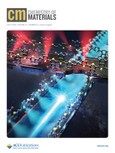
E. C. Vermisoglou, P. Jakubec, A. Bakandritsos, M. Pykal, S. Talande, V. Kupka, R. Zbořil and M. Otyepka: Chemical Tuning of Specific Capacitance in Functionalized Fluorographene, CHEMISTRY OF MATERIALS, vol. 31, iss. 13, pp. 4698–4709, 2019.
DOI: 10.1021/acs.chemmater.9b00655, IF = 10.159
Abstract: Owing to its high surface area and excellent conductivity, graphene is considered an efficient electrode material for supercapacitors. However, its restacking in electrolytes hampers its broader utilization in this field. Covalent graphene functionalization is a promising strategy for providing more efficient electrode materials. The chemistry of fluorographene is particularly attractive as it allows scalable chemical production of useful graphene derivatives. Nevertheless, the influence of chemical composition on the capacitance of graphene derivatives is a largely unexplored field in nanomaterials science, limiting further development of efficient graphene-based electrode materials. In the present study, we obtained well-defined graphene derivatives differing in chemical composition but with similar morphologies by controlling the reaction time of 5-aminoisophthalic acid with fluorographene. The gravimetric specific capacitance ranged from 271 to 391 F g–1 (in 1 M Na2SO4), with the maximum value achieved by a delicate balance between the amount of covalently grafted functional groups and density of the sp2 carbon network governing the conductivity of the material. Molecular dynamics simulations showed that covalent grafting of functional groups with charged and ionophilic/hydrophilic character significantly enhanced the ionic concentration and hydration due to favorable electrostatic interactions among the charged centers and ions/water molecules. Therefore, conductive and hydrophilic graphitic surfaces are important features of graphene-based supercapacitor electrode materials. These findings provide important insights into the role of chemical composition on capacitance and pave the way toward designing more efficient graphene-based supercapacitor electrode materials.
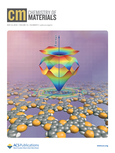
B. Cirera, B. de la Torre, D. Moreno, M. Ondráček, R. Zbořil, R. Miranda, P. Jelínek and D. Écija: On-Surface Synthesis of Gold Porphyrin Derivatives via a Cascade of Chemical Interactions: Planarization, Self-Metalation, and Intermolecular Coupling, CHEMISTRY OF MATERIALS vol. 31, iss. 9, pp. 3248-3256, 2019.
DOI: 10.1021/acs.chemmater.9b00125, IF = 10.159
Abstract: On-surface chemistry in ultrahigh vacuum offers complementary routes for synthesizing molecular complexes that cannot be accessed through standard solution chemistry. The presence of a surface not only imposes spatial two-dimensional restraints but also frequently acts as a source of adatoms actively participating in the chemical reactions. Here we demonstrate the formation of gold porphyrin derivatives via thermally induced chemical transformations of a fluorinated free-base porphyrin, 2H-4FTPP, on a Au(111) surface, which can rarely be accessed via standard solution chemistry protocols. We also provide an accurate description of the mechanisms of on-surface reactions and self-assembly processes, including structural and electronic characterization of intermediates and products using high-resolution scanning probe microscopy with a CO tip supported by a computational study. An initial annealing step at 500 K induces planarization of the adsorbed free base via dehydrogenation and ring-closing reactions that preserve the integrity of the C–F bonds. A second annealing step at 575 K enables metalation, producing unprecedented surface-supported gold-coordinated planarized porphyrins. A final annealing step at 625 K induces C–F and C–H activation, leading to intermolecular C–C coupling between phenyl termini to form planarized porphyrin oligomers. These results open new avenues for engineering in a stepwise manner thermally sensitive on-surface chemical reactions and metal–organic compounds that cannot be accessed in solution chemistry.
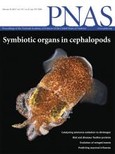
N. Ripin, J. Boudet, M.M. Duszczyk, A. Hinniger, M. Faller, M. Krepl, A. Gadi, R.J. Schneider, J. Šponer, N.C. Meisner-Kober, F.H. Allain: Molecular basis for AU-rich element recognition and dimerization by the HuR C-terminal RRM, PROCEEDINGS OF THE NATIONAL ACADEMY OF SCIENCES vol. 116, iss. 8, pp. 2935-2944, 2019.
DOI: 10.1073/pnas.1808696116, IF = 9.58
Abstract: Human antigen R (HuR) is a key regulator of cellular mRNAs containing adenylate/uridylate–rich elements (AU-rich elements; AREs). These are a major class of cis elements within 3′ untranslated regions, targeting these mRNAs for rapid degradation. HuR contains three RNA recognition motifs (RRMs): a tandem RRM1 and 2, followed by a flexible linker and a C-terminal RRM3. While RRM1 and 2 are structurally characterized, little is known about RRM3. Here we present a 1.9-Å-resolution crystal structure of RRM3 bound to different ARE motifs. This structure together with biophysical methods and cell-culture assays revealed the mechanism of RRM3 ARE recognition and dimerization. While multiple RNA motifs can be bound, recognition of the canonical AUUUA pentameric motif is possible by binding to two registers. Additionally, RRM3 forms homodimers to increase its RNA binding affinity. Finally, although HuR stabilizes ARE-containing RNAs, we found that RRM3 counteracts this effect, as shown in a cell-based ARE reporter assay and by qPCR with native HuR mRNA targets containing multiple AUUUA motifs, possibly by competing with RRM12.
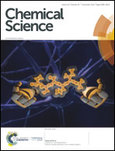
M. Blanco, D. Mosconi, M. Otyepka, M. Medveď, A. Bakandritsos, S. Agnoli and G. Granozzi, "Combined high degree of carboxylation and electronic conduction in graphene acid sets new limits for metal free catalysis in alcohol oxidation," CHEMICAL SCIENCE, vol. 10, iss. 41, pp. 9438-9445, 2019.
DOI: 10.1039/c9sc02954k, IF = 9.556
Abstract: Graphene oxide, the most prominent carbocatalyst for several oxidation reactions, has severe limitations due to the overstoichiometric amounts required to achieve practical conversions. Graphene acid, a well-defined graphene derivative selectively and homogeneously covered by carboxylic groups but maintaining the high electronic conductivity of pristine graphene, sets new activity limits in the selective and general oxidation of a large gamut of alcohols, even working at 5 wt% loading for at least 10 reaction cycles without any influence from metal impurities. According to experimental data and first principles calculations, the selective and dense functionalization with carboxyl groups, combined with excellent electron transfer properties, accounts for the unprecedented catalytic activity of this graphene derivative. Moreover, the controlled structure of graphene acid allows shedding light upon the critical steps of the reaction and regulating precisely its selectivity toward different oxidation products.
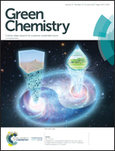
B. Feizi Mohazzab, B. Jaleh, Z. Issaabadi, M. Nasrollahzadeh and R. S. Varma, "Stainless steel mesh-GO/Pd NPs: catalytic applications of Suzuki–Miyaura and Stille coupling reactions in eco-friendly media," GREEN CHEMISTRY, vol. 21, iss. 12, pp. 3319-3327, 2019.
DOI: 10.1039/c9gc00889f, IF = 9.405
Abstract: The immobilization of palladium nanoparticles (Pd NPs) on stainless-steel mesh is described in two short steps via deposition of graphene oxide (GO) on the stainless-steel mesh (mesh-GO) by electrophoretic deposition (EPD), preparation of Pd NPs using laser ablation in liquids (LAL) and finally the immobilization of Pd NPs on the mesh-GO by immersion in a Pd NP colloidal solution. The novel, efficient and reusable mesh-GO/Pd catalyst was characterized by various techniques such as SEM, EDS, UV-Vis and FT-IR spectroscopy and its catalytic activity was investigated for the Suzuki–Miyaura and Stille coupling reactions in ethanolic water.

S. Verma, M. N. Nadagouda and R. S. Varma, "Visible light-mediated and water-assisted selective hydrodeoxygenation of lignin-derived guaiacol to cyclohexanol," GREEN CHEMISTRY, vol. 21, iss. 6, pp. 1253-1257, 2019.
DOI: 10.1039/c8gc03951h, IF = 9.405
Abstract: A magnetically separable bimetallic AgPd/Fe@CNX catalyst has been synthesized and utilized for upgrading of lignin-derived guaiacol to cyclohexanol via hydrodeoxygenation using formic acid as a source of hydrogen under visible light irradiation. A nitrogen-enriched carbonaceous material, carbon nitride (CNX), is obtained via calcination of chitosan, a marine-derived abundant waste material and subsequently utilized as a support for the immobilization of nano-ferrites and silver and palladium nanoparticles. Hydrogen generation from renewable sources such as formic acid and its ideal utilization for the upgrading of biomass-derived guaiacol are the main findings. The synergetic effect of Ag and Pd on the CNX support enhances the decomposition of formic acid which is aptly utilized for the selective defunctionalization of guaiacol at ambient pressure.

S. E. Hooshmand, B. Heidari, R. Sedghi and R. S. Varma, "Recent advances in the Suzuki–Miyaura cross-coupling reaction using efficient catalysts in eco-friendly media," GREEN CHEMISTRY, vol. 21, iss. 3, pp. 381-405, 2019.
DOI: 10.1039/c8gc02860e, IF = 9.405
Abstract: The ever-increasing interest in the Suzuki–Miyaura cross-coupling reaction (SMR) and its applications, with more than 40 years of history, has increased exponentially in the last decade, which speaks volumes about its efficiency and effectiveness. This widely used powerful method provides a practical synthetic route for the direct formation of carbon–carbon bonds, which has found considerable academic and industrial use for the production of polymers, fine chemicals and materials, in addition to total synthesis and pharmaceuticals. Green chemistry predicates the use of environmentally-benign media in organic transformations and in recent years, catalytic systems have been introduced in diverse and neoteric green media for SMR. In view of the widespread popularity, there is the need for a comprehensive understanding of the various greener strategies introduced for this important reaction encompassing diverse catalytic systems based on palladium, nickel, gold, ferrites, copper, silver, and cobalt. The present review embodies literature from 2008 onward that covers the SMR using efficient catalysts in various green media.
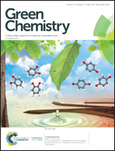
R. Mohammadinejad, A. Shavandi, D. S. Raie, J. Sangeetha, M. Soleimani, S. Shokrian Hajibehzad, D. Thangadurai, R. Hospet, J. O. Popoola, A. Arzani, M. A. Gómez-Lim, S. Iravani and R. S. Varma, "Plant molecular farming: production of metallic nanoparticles and therapeutic proteins using green factories," GREEN CHEMISTRY, vol. 21, iss. 8, pp. 1845-1865, 2019.
DOI: 10.1039/c9gc00335e, IF = 9.405
Abstract: Plants have had numerous biological, clinical, pharmaceutical and medicinal purposes for many years; however, their use as a general platform for preparation of desired pharmaceutical and biomedical compounds is relatively current. Secondary metabolites with remarkable and diverse biological functions are produced by medicinal plants. Significant advancements in nanosciences have enabled their various applications in the development of a new generation of drug molecules. Due to the application of toxic solvents and high energy consumption of conventional physical and chemical approaches, greener and eco-friendly methods are essential and vital. Plants can provide an outstanding alternative for the production of phytomaterials and biomaterials, and this review highlights the exogenous and endogenous syntheses of nanoparticles using living plants. Additionally, the plant nano-molecular farming of proteins including collagen, gelatin, elastin, recombinant anti-cancer monoclonal antibodies and recombinant anti-cancer vaccines is discussed.
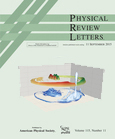
V. Trávníček, K. Bartkiewicz, A. Černoch and K. Lemr, "Experimental Measurement of the Hilbert-Schmidt Distance between Two-Qubit States as a Means for Reducing the Complexity of Machine Learning," PHYSICAL REVIEW LETTERS, vol. 123, iss. 26, p. 260501, 2019.
DOI: 10.1103/physrevlett.123.260501, IF = 9.227
Abstract: We report on the experimental measurement of the Hilbert-Schmidt distance between two two-qubit states by many-particle interference. We demonstrate that our three-step method for measuring distances in the Hilbert space is far less complex than reconstructing density matrices and that it can be applied in quantum-enhanced machine learning to reduce the complexity of calculating Euclidean distances between multidimensional points, which can be especially interesting for near term quantum technologies and quantum artificial intelligence research. Our results are also a novel example of applying mixed states in quantum information processing. Usually working with mixed states is undesired, but here it gives the possibility of encoding extra information as the degree of coherence between the given two dimensions of the density matrix.
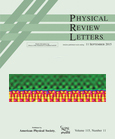
A. Barasiński, A. Černoch and K. Lemr, "Demonstration of Controlled Quantum Teleportation for Discrete Variables on Linear Optical Devices," PHYSICAL REVIEW LETTERS, vol. 122, iss. 17, p. 170501, 2019.
DOI: 10.1103/physrevlett.122.170501, IF = 9.227
Abstract: We report an experimental implementation of tripartite controlled quantum teleportation on quantum optical devices. The protocol is performed through bi- and tripartite entangled channels of discrete variables and qubits encoded in the polarization of individual photons. The experimental results demonstrate successful controlled quantum teleportation with a fidelity around 83%, well above the classical limit. By realizing the controlled quantum teleportation through a biseparable state, we show that tripartite entanglement is not a necessary resource for controlled quantum teleportation, and the controller’s capability to allow or prohibit the teleportation cannot be considered to be a manifestation of tripartite entanglement. These results open new possibilities for further application of controlled quantum teleportation by lowering the teleportation channel’s requirements.
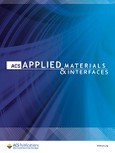
B. Jin, S. Hejazi, F. Pyczak, M. Oehring, S. Mohajernia, S. Kment, O. Tomanec, R. Zboril, N. T. Nguyen, M. Yang and P. Schmuki, "Amorphous Mo-Ta oxide nanotubes for long-term stable Mo oxide based supercapacitors," ACS APPLIED MATERIALS & INTERFACES, vol. 11, iss. 49, pp. 45665–45673, 2019.
DOI: 10.1021/acsami.9b15958, IF = 8.456
Abstract: With a large-scale usage of portable electric appliances, a high demand for increasingly high density energy storage devices has emerged. MoO3 has, in principle, a large potential as negative electrode material in supercapacitive devices, due to high charge densities that can be obtained from its reversible redox reactions. Nevertheless, the extremely poor electrochemical stability of MoO3 in aqueous electrolytes prevents a practical use in high capacitance devices. In this work, we describe how to overcome this severe stability issue by forming amorphous molybdenum oxide/tantalum oxide nanotubes by anodic oxi-dation of a Mo-Ta alloy. The presence of a critical amount of Ta-oxide (> 20 at-%) prevents the electrochemical decay of the MoO3 phase and thus yields an extremely high stability. Due to the protection provided by tantalum oxide, no capaci-tance losses are measureable after 10000 charging/discharging cycles.
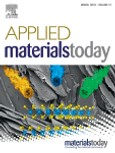
Z. Medříková, P. Jakubec, V. Ranc, A. Bakandritsos, J. Kašlík and R. Zbořil, "Carboxymethylcellulose-based magnetic Au or Ag nanosystems: Eminent candidates in catalysis, sensing applications based on SERS, and electrochemistry," APPLIED MATERIALS TODAY, vol. 14, iss. , pp. 143-150, 2019.
DOI: 10.1016/j.apmt.2018.12.001, IF = 8.013
Abstract: An increasing demand for metal gold- and/or silver-based nanomaterials in optics, catalysis, and electrochemical sensing research calls for the development of a new, clean, and environmentally friendly methodology for the production of metal-containing composites. Herein, we report a novel method for fabrication of dispersed carboxymethylcellulose stabilized iron oxide nanoparticles capable to adsorb silver and gold ions onto the surface. Simultaneously, Ag or Au ions are trapped on the magnetic carrier surface and reduced into metal nanoparticles without the action of another reducing agent. The magnetic silver nanocomposite with dumbbell-like structures and magnetic gold nanocomposite with strawberry-like structures, both of different composition (5, 10, and 20 wt.% metal contents), were prepared and characterized by high-resolution transmission electron microscopy, energy-dispersive X-ray spectroscopy, X-ray powder diffraction, and atomic absorption spectroscopy. Subsequently, the prepared magnetic silver and gold nanocomposites (cMNPs-Ag and cMNPs-Au, respectively) were studied as sufficient candidates in catalysis, sensing applications based on SERS, and electrochemistry. The catalytic properties were demonstrated with the reduction of 4-nitrophenol to 4-aminophenol as a model reaction, where very high rate constants of nanocomposites ranging between 0.25 and 4.12 min−1 were determined. The TOF values were calculated to be from 20.87 to 95.34 min−1. Glassy carbon electrodes modified with cMNPs-Au or cMNPs-Ag nanocomposites were used for successful determination of H2O2 by means of cyclic voltammetry. Obtained results revealed the well-defined reduction peak around −0.45 V indicating small overpotential necessary for H2O2 detection and detection limits were found to be 2.82 × 10−7 mol L−1 (cMNPs-Au) and 3.04 × 10−7 mol L−1 (cMNPs-Ag). Utilization of nanocomposites as active SERS substrates was demonstrated on the analysis of Rhodamine 6G. The determined enhancement factors were 2 × 107 (cMNPs-Au, 20 wt.% Au content) and 3.2 × 107 (cMNP-Ag, 20 wt.% Ag content).
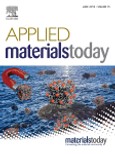
G. Potsi, A. B. Bourlinos, V. Mouselimis, K. Poláková, N. Chalmpes, D. Gournis, S. Kalytchuk, O. Tomanec, P. Błoński, M. Medveď, P. Lazar, M. Otyepka and R. Zbořil, "Intrinsic photoluminescence of amine-functionalized graphene derivatives for bioimaging applications," APPLIED MATERIALS TODAY, vol. 17, iss. , pp. 112-122, 2019.
DOI: 10.1016/j.apmt.2019.08.002, IF = 8.013
Abstract: Photoluminescent graphene-based materials have enormous application potential in cell imaging, display technologies, biomedicine and biosensing. Therefore, their development represents a principal yet highly challenging task for graphene chemistry. Up to now, strategies based on the size confinement in graphene/graphene oxide (GO) quantum dots, non-covalent chemistry combining GO with photoluminescence species, and GO chemistry enabling band gap tuning have been reported. Here, we introduce a simple approach to intrinsically photoluminescent graphene derivatives via one-step fluorographene chemistry enabling controlled surface engineering/chemical reduction by amines. Specifically, the reaction of fluorographene with dodecylamine and hexamethylenediamine results in organophilic and hydrophilic graphene derivatives, respectively, exhibiting intrinsic fluorescence. Both density functional theory calculations and experimental data show that the emission properties occur because of the energy gaps engineered by the choice of amine. Cytotoxicity measurements on NIH/3T3 and HeLa cells demonstrated high biocompatibility for the hydrophilic amine-functionalized derivative. Due to the intrinsic fluorescence, quantification of the uptake by cells and localization of graphene-based sheets in cells can be performed directly using a flow cytometry technique and fluorescence microscopy imaging. These findings pave the way for a new class of functional photoluminescent graphene derivatives with high application potential in fields like biosensing, biomedicine and bioimaging.

M. Černík, J. Nosek, J. Filip, J. Hrabal, D. W. Elliott and R. Zbořil, "Electric-field enhanced reactivity and migration of iron nanoparticles with implications for groundwater treatment technologies: Proof of concept," WATER RESEARCH, vol. 154, pp. 361–369, 2019.
DOI: 10.1016/j.watres.2019.01.058, IF = 7.913
Abstract: The extensive use of nanoscale zero-valent iron (nZVI) particles for groundwater treatment has been limited, in part, because of their non-selective reactivity and low mobility in aquatic environments. Herein, we describe and explore progressive changes in the reactivity and migration of aqueous dispersed nZVI particles under an applied DC electric field. Due to the applied electric field with an intensity of about 1 V cm–1, the solution oxidation-reduction potential (ORP) remained as low as –200 mV for at least 32 days, which was in agreement with the persistence of the reduced iron species (mainly Fe(II)), and led to substantially prolonged reactivity of the original nZVI. The treatment of chlorinated ethenes (DCE>PCE>TCE) was markedly faster, individual CHC compounds were eliminated with the same kinetics and no lesser-chlorinated intermediates were accumulated, following thus the direct dechlorination scheme. When nZVI-dispersion flows towards the anode through vertical laboratory columns filled with quartz sand, significant enhancement of nZVI migration was recorded because of lower extent of nanoparticle aggregation and increased repulsion forces between the nanoparticles and the surface of silica dioxide. The results of this study have significant consequences for groundwater remediation, mainly for the treatment of slowly degradable DCE in real CHC contaminated groundwater, where it could improve the reactivity, the longevity and the migration of nZVI particles.
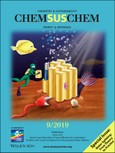
E. Wierzbicka, X. Zhou, N. Denisov, J. Yoo, D. Fehn, N. Liu, K. Meyer and P. Schmuki, "Self‐Enhancing H2 Evolution from TiO2Nanostructures under Illumination," CHEMSUSCHEM, vol. 12, iss. 9, pp. 1900-1905, 2019.
DOI: 10.1002/cssc.201900192, IF = 7.804
Abstract: Illumination of anatase in an aqueous methanolic solution leads to the formation of Ti3+ sites that are catalytically active for the generation of dihydrogen (H2). With increasing illumination time, a light‐induced self‐amplification of the photocatalytic H2 production rate can be observed. The effect is characterized by electron paramagnetic resonance (EPR) spectroscopy, reflectivity, and photoelectrochemical techniques. Combined measurements of H2 generation rates and in situ EPR spectroscopic observation over the illumination time with AM 1.5G or UV light establish that the activation is accompanied by the formation of Ti3+ states, which is validated through their characteristic EPR resonance at g=1.93. This self‐activation and amplification behavior can be observed for anatase nanoparticles and nanotubes.
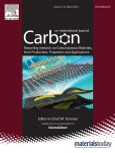
D. Mosconi, M. Blanco, T. Gatti, L. Calvillo, M. Otyepka, A. Bakandritsos, E. Menna, S. Agnoli and G. Granozzi, "Arene C-H insertion catalyzed by ferrocene covalently heterogenized on graphene acid," CARBON, vol. 143, iss. , pp. 318-328, 2019.
DOI: 10.1016/j.carbon.2018.11.010, IF = 7.466
Abstract: The heterogenation of molecular catalysts on solid supports is a viable route for the preparation of hybrid materials that combine the high selectivity and activity of homogeneous active species with the enhanced stability and recyclability imparted by the heterogeneous nature of the support. In this work we describe the covalent functionalization with ferrocene (Fc) of two graphene derivatives: graphene acid (GA), a graphene layer whose basal plane is modified with COOH groups, and graphene oxide (GO). The surface modification is performed exploiting the carbodiimide chemistry, which allows introducing up to 3.6% at. of iron in the GA-based material. Compared to GO, GA owns a superior functionalization degree, which is attributed to its controlled surface chemistry. Both Fc-modified materials are tested as catalysts in the CH insertion of diazonium salts employing arene substrates. The materials are active, versatile and recyclable catalysts that show a catalytic performance comparable to or even better than molecular Fc, together with a 100% recyclability which does not alter the catalytic performance. The GA-based hybrid catalyst results more active than that based on GO due to the presence of more extended aromatic domains that facilitate the adsorption of the reagents close to the active sites.
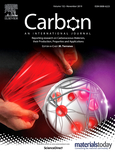
T. Malina, E. Maršálková, K. Holá, J. Tuček, M. Scheibe, R. Zbořil and B. Maršálek: Toxicity of graphene oxide against algae and cyanobacteria: Nanoblade-morphology-induced mechanical injury and self-protection mechanism, CARBON, vol. 155, pp. 386-396, 2019.
DOI: 10.1016/j.carbon.2019.08.086, IF = 7.466
Abstract: Graphene oxide (GO) is the most extensively studied two-dimensional material and has many potential applications in biomedicine, biotechnologies, and environmental technologies. However, its toxicological effects on aquatic organisms have not been properly investigated. Here, we compare the toxicity of differently oxidized graphene oxide systems towards the green alga Raphidocelis subcapitata and the cyanobacterium Synechococcus elongatus. The cyanobacterium exhibited higher GO sensitivity and more rapid growth inhibition than the alga, in keeping with the established antibacterial properties of GO. The toxic effects of GO included shading/aggregation of GOs and nutrient depletion; however a detailed mechanistic study revealed that GO acted against R. subcapitata via an additional, new mechanism. Remarkably, lightly oxidized GO samples induced significantly greater membrane integrity damage than more heavily oxidized GO samples. Flow cytometry and microscopy experiments revealed that lightly oxidized GO can act as a “nano-blade” that causes mechanical damage to algal cells, probably because of the comparatively low coverage of oxygen-bearing functionalities at the edges of such GO sheets. The degree of oxidation of GO samples thus affects their ecotoxicity. Interestingly, longer incubations activated stress-induced defense reactions involving extracellular protein and carbohydrate biosynthesis in both algae and cyanobacteria.

T. Malina, K. Poláková, J. Skopalík, V. Milotová, K. Holá, M. Havrdová, K. B. Tománková, V. Čmiel, L. Šefc and R. Zbořil: Carbon dots for in vivo fluorescence imaging of adipose tissue-derived mesenchymal stromal cells, CARBON, vol. 152, pp. 434-443, 2019.
DOI: 10.1016/j.carbon.2019.05.061, IF = 7.466
Abstract: Tissue regeneration based on stem cell therapy is one of the most rapidly developing fields of modern medicine. Several properties of human mesenchymal stromal cells (MSCs), such as tropism toward a tumor or injury site, make them promising candidates for regenerative medicine, targeted therapy, or treating injured tissues. However, to fully understand the role of stem cells in therapeutic function, their visualization in vivo is essential. Here, we describe, for the first time, the use of biocompatible quaternized carbon dots (QCDs) as a novel stem-cell tracking probe for in vivo fluorescence imaging of transplanted human MSCs. By studying the in vitro cytotoxicity, intracellular distribution, and precise uptake mechanism, we showed that QCDs had a high biocompatibility and excellent fluorescence properties after 24 h incubation with MSCs. Further to demonstrate the in vivo feasibility of the system, QCD-labeled MSCs (100 μg/mL of QCDs, 24 h incubation time) were transplanted subcutaneously into an immunodeficient mouse and visualized by optical in vivo imaging. The labeled cells were strongly fluorescent, allowing their semi-quantitative detection. Moreover, the homing of intravenously transplanted QCD-labeled MSCs into the solid tumor was clearly shown. The results demonstrated that QCD-labeling of human MSCs is a highly promising approach for in vivo tracking during stem cell therapy.
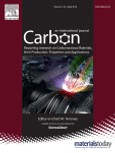
H. Barès, A. Bakandritsos, M. Medveď, J. Ugolotti, P. Jakubec, O. Tomanec, S. Kalytchuk, R. Zbořil and M. Otyepka, "Bimodal role of fluorine atoms in fluorographene chemistry opens a simple way toward double functionalization of graphene," CARBON vol. 145, pp. 251-258, 2019.
DOI: 10.1016/j.carbon.2019.01.059, IF = 7.466
Abstract: Photo-triggered and double functionalization of graphene without use of aggressive photo-generated radicals is a challenging task in two-dimensional chemistry. This was here-in achieved by unravelling the bimodal role of fluorine atoms in fluorographene chemistry: (i) they rendered graphene's double bonds susceptible to reaction with a photo-activated diene and (ii) allowed nucleophilic substitution on F-bonded carbons. Theoretical calculations indicated that the presence of F atoms in the vicinity of sp2 carbon domains significantly increased bond polarization, turning the otherwise unfeasible on pristine graphene photo-cycloaddition into a very efficient functionalization strategy. Following this strategy, we prepared new graphene derivatives densely and homogeneously covered by functional groups. Furthermore, photo-induced cycloaddition following amine nucleophilic substitution on fluorographene enabled preparation of a bis-functionalized graphene derivative. The reported procedure paves the way toward unexplored graphene derivatives not attainable through known graphene chemistries, which can be utilized in many applications such as dual read-out sensors, drug delivery systems, catalysis, and energy storage.
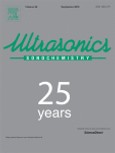
M. Nasrollahzadeh, M. Sajjadi and R. S. Varma, "A catalyst-free and expeditious general synthesis of N-benzyl-N-arylcyanamides under ultrasound irradiation at room temperature," ULTRASONICS SONOCHEMISTRY, vol. 56, iss. , pp. 481-486, 2019.
DOI: 10.1016/j.ultsonch.2019.04.038, IF = 7.279
Abstract: A hitherto unknown, novel and direct approach to the efficient synthesis of N-benzyl-N-arylcyanamides is described via N-benzylation of a variety of arylcyanamides with benzyl bromide under ultrasound irradiation condition at room temperature; assorted N-benzyl-N-arylcyanamides are expeditiously accessible in excellent yields. The salient features of this approach include a very simple and clean reaction, higher yields obtained under mild conditions in an environmentally benign protocol. Additionally, easy isolation of the desired products without any tedious purification renders the present protocol a suitable alternative to desirable organic disubstituted cyanamides.

K. Grübel, M. Kuglarz, S. Wacławek, V. V. Padil, M. Černík and R. S. Varma, "Microwave-assisted sustainable co-digestion of sewage sludge and rapeseed cakes," ENERGY CONVERSION AND MANAGEMENT, vol. 199, iss. , pp. 112012, 2019.
DOI: 10.1016/j.enconman.2019.112012, IF = 7.181
Abstract: The technological concept ensuring highly efficient co-digestion of by-products from the production of biodiesel and sewage sludge was examined. Rapeseed cakes (RC) 1–5% addition to waste activated sludge (WAS) 95–99% in digesters, positively influenced the degree of biodegradation of organic matter and the quantity and quality of the biogas produced. Under the optimal conditions (HRT = 20–22 days), the co-digestion mixtures (WAS + microwave disintegration + RC) generated double the amount of biogas, containing approximately 10–12% more CH4, than the samples which had the sewage sludge only. Under these conditions, the biogas yield increased by approximately 48–82% depending on the co-substrate used and was further improved via the introduction of microwave pre-treatment. After testing at the pilot scale, this method could be considered as a sustainable alternative to conventional methods for WAS and RC treatment.
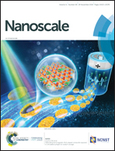
M. Petr, P. Jakubec, V. Ranc, V. Šedajová, R. Langer, M. Medveď, P. Błoński, J. Kašlík, V. Kupka, M. Otyepka and R. Zbořil, "Thermally reduced fluorographenes as efficient electrode materials for supercapacitors," NANOSCALE, vol. 11, iss. 44, pp. 21364-21375, 2019.
DOI: 10.1039/c9nr07255a, IF = 6.97
Abstract: There is an urgent need for a simple and up-scalable method for the preparation of supercapacitor electrode materials due to increasing global energy consumption worldwide. We have discovered that fluorographene exhibits great potential for the development of new kinds of supercapacitors aimed at practical applications. We have shown that time control of isothermal reduction of fluorographite at 450 °C under a hydrogen atmosphere led to the fine-tuning of fluorine content and electronic properties of the resulting fluorographene derivatives. Charge transfer resistances (Rct) of the thermally reduced fluorographenes (TRFGs) were decreased with respect to the pristine fluorographene; however, the Rctvs. time-of-reduction plot showed a v-shaped profile. The specific capacitance vs. time-of-reduction of TRFG followed the v-shaped trend, which could be the result of the decreasing content of sp3 carbons and increasing content of structural defects. An optimized material exhibited values of specific capacitance up to 539 F g−1 recorded at a current density of 0.25 A g−1 and excellent cycling durability with 100% specific capacitance retention after 1500 cycles in a three-electrode configuration and 96.7% of specific capacitance after 30 000 cycles in a two-electrode setup.
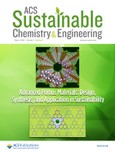
S. Iravani, and R. S. Varma, "Plant-Derived Edible Nanoparticles and miRNAs: Emerging Frontier for Therapeutics and Targeted Drug-Delivery," ACS SUSTAINABLE CHEMISTRY & ENGINEERING, vol. 7, iss. 9, pp. 8055-8069, 2019.
DOI: 10.1021/acssuschemeng.9b00954, IF = 6.97
Abstract: Rigorous and timely studies have been conducted to develop natural and green nanomedicines wherein plant-derived edible nanoparticles (PDENs) have a great potential to be applied for targeted therapeutic delivery systems, because of their exclusive characteristics, namely desirable nanoparticle morphologies, environmentally safe and nonhazardous nature, appropriate tissue-specific targeting, and eminent potential for industrial pharmaceutical production. These nanoparticles can be exploited for drug transportation with distinctive benefits for treatment of diseases like cancers. In this Perspective, the properties and applications of PDENs are discussed with latest developments including the recent trends in plant-derived edible exosome-like nanoparticles and miRNAs.

R. S. Varma, "Biomass-Derived Renewable Carbonaceous Materials for Sustainable Chemical and Environmental Applications," ACS SUSTAINABLE CHEMISTRY & ENGINEERING, vol. 7, iss. 7, pp. 6458-6470, 2019.
DOI: 10.1021/acssuschemeng.8b06550, IF = 6.97
Abstract: Our Biosphere comprises abundant biopolymers such as cellulose, chitin, and chitosan possessing highly desirable traits with biodegradability and renewability being prominent ones. The presence of amino groups in chitin/chitosan confer these basic polysaccharides numerous advantages to help generate chemical entities with unique and sought-after functional properties, besides nitrogen-enriched carbonaceous materials. This Perspective article emphasizes some of the appealing prospects these biopolymers provide because of the recent technological developments in nanotechnology field ranging from traditional catalysis to emerging high-value products. A few examples are presented for sustainable chemical transformations and environmental remediation exploiting the abundant biomass, agricultural residues, and seafood waste. Traditional biomass-derived platform chemicals are also introduced as the potential source of renewable feedstocks from these carbon-based materials, which offer many options for production of sustainable products thus circumventing the traditional use of fossil fuel-derived chemicals.

V. V. T. Padil, C. Senan, S. Wacławek, M. Černík, S. Agarwal and R. S. Varma, "Bioplastic Fibers from Gum Arabic for Greener Food Wrapping Applications," ACS SUSTAINABLE CHEMISTRY & ENGINEERING, vol. 7, iss. 6, pp. 5900-5911, 2019.
DOI: 10.1021/acssuschemeng.8b05896, IF = 6.97
Abstract: The fabrication of bioplastic fibers from gum arabic (GA), a natural tree gum exudate, is described via the electrospinning method. The enrichment in surface properties of this bioplastic fiber was evaluated by methane plasma and γ-ray irradiation treatments. The fibers with their modified forms, both treated and untreated, were investigated by various characterization techniques such as scanning electron microscopy, atomic force microscopy, X-ray diffraction and attenuated total reflectance–Fourier transform infrared spectroscopy, thermogravimetric analysis, BET surface area, water contact angle, and tensile strength measurements. A switchable hydrophobic/hydrophilic functionality on GA bioplastic fibers was established through CH4 plasma and γ-ray irradiation treatments; higher water contact angle (130°) was observed in GA bioplastic fibers that had undergone methane plasma treatment. However, the untreated and γ-ray-irradiated GA bioplastics exhibited hydrophilic behavior. The comparative properties such as water resistance, antioxidant potency, gas barrier attributes, antibacterial effectiveness, biodegradability and food contact migration through the GA bioplastic fibers (untreated, plasma-treated, and γ-ray-irradiated) were assessed. The present work, in contrast to other existing bioplastic fibers, has the potential of becoming a viable option in greener food packaging as well as in environmental and medically related products based on tree gums.

M. Manzoli, E. C. Gaudino, G. Cravotto, S. Tabasso, R. B. N. Baig, E. Colacino and R. S. Varma, "Microwave-Assisted Reductive Amination with Aqueous Ammonia: Sustainable Pathway Using Recyclable Magnetic Nickel-Based Nanocatalyst," ACS SUSTAINABLE CHEMISTRY & ENGINEERING, vol. 7, iss. 6, pp. 5963-5974, 2019.
DOI: 10.1021/acssuschemeng.8b06054, IF = 6.97
Abstract: The development of sustainable protocols for the reductive amination is a highly desirable pursuit in the domain of green synthesis. Magnetic nanocatalysts have found a unique niche in chemical synthesis in recent years as the recovery of expensive and/or toxic catalysts after their use are some of the salient features of these greener processes. Herein, we report the application of a recyclable nickel silica eggshell iron-based magnetic nanoparticles (Fe3O4@SiO2-Ni) for the expeditious microwave-assisted reductive amination of aryl aldehydes and ketones in aqueous ammonia; several desired primary amines were produced in good-to-excellent conversions. Extensive characterization of both, fresh and recycled Fe3O4@SiO2-Ni catalysts, showed that the Ni nanoparticles are highly dispersed on the silica shell and that the metal active phase is highly stable as the core–shell morphology is maintained after reaction, indeed the catalyst is recyclable up to six runs without deactivating. A synergic effect between the Ni nanoparticles and the silica support has been hypothesized wherein the Fe3O4@SiO2-Ni system worked as a bifunctional catalyst; support facilitates the activation of the substrate, and the metal nanoparticles promote the subsequent imine hydrogenation.
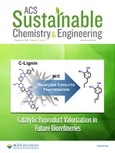
D. S. Doke, J. H. Advani, D. R. Naikwadi, M. B. Gawande, P. Walke, S. B. Umbarkar and A. V. Biradar, "Utilization of Waste Biomass for the Synthesis of Functionalizable Support for Covalent Anchoring of Active Organo Catalyst," ACS SUSTAINABLE CHEMISTRY & ENGINEERING, vol. 7, iss. 3, pp. 3018-3026, 2019.
DOI: 10.1021/acssuschemeng.8b04430, IF = 6.97
Abstract: A single step synthetic procedure for carbon microspheres from agricultural waste residue (sugarcane bagasse) by low-temperature hydrothermal carbonization using oxalic acid as a hydrating/dehydrating agent is developed. The FTIR and XPS spectroscopy analysis indicates the presence of −OH, −COOH, and C═O functional groups on the surfaces of carbon spheres. These functional groups of the carbon spheres were utilized as a novel route to anchor 3-aminopropyl-triethoxysilane and 3-(2-aminoethylamino)propyl)-trimethoxysilane via condensation of triethoxy/trimethoxy silanes for the synthesis of organo base supported on carbon catalysts. The catalytic activity of the obtained supported organo-base catalyst was demonstrated for C–C bond forming (Henry) reaction. Among all prepared catalysts, 3-(2-aminoethylaminopropyl)-trimethoxysilane grafted in toluene showed high conversion (up to 100%) of aldehydes with excellent selectivity toward β-nitrostyrene. The catalyst was reused five times without losing significant activity for the same reaction.

A. R. Puente-Santiago, D. Rodríguez-Padrón, X. Quan, M. J. Muñoz Batista, L. O. Martins, S. Verma, R. S. Varma, J. Zhou and R. Luque, "Unprecedented Wiring Efficiency of Sulfonated Graphitic Carbon Nitride Materials: Toward High-Performance Amperometric Recombinant CotA Laccase Biosensors," ACS SUSTAINABLE CHEMISTRY & ENGINEERING, vol. 7, iss. 1, pp. 1474-1484, 2019.
DOI: 10.1021/acssuschemeng.8b05107, IF = 6.97
Abstract: Control of electron-transfer (ET) processes across electrochemically active biomaterials by tuning the surface properties of platform materials plays a key role in the design of highly efficient biosensors. In this work, ET rates of recombinant CotA laccases have been drastically improved by an immobilization process on sulfonic group-modified graphitic carbon nitride (Sg-CN) materials. Cyclic voltammetry (CV) and Fourier transform infrared (FTIR) spectroscopy revealed that the enzymes undergo striking conformational changes onto graphitic carbon nitride (g-CN), adopting an electrochemically inactive configuration while retain their nativelike structure with a superb ET efficiency on Sg-CN surfaces. In fact, the resulting CotA laccase/Sg-CN biomaterial displayed an ET rate constant of (12 ± 0.5) s–1, the highest value reported to date for a direct electron-transfer reaction of multicopper oxidases attached to carbon-based materials. Importantly, the combined parallel tempering Monte Carlo (PTMC) and all-atom molecular dynamics (AAMD) theoretical calculations proved CotA incorporation in a highly ordered array with an overall positive surface density composed of lysine and arginine domains in contact with net negatively charged Sg-CN surfaces, which promoted a 1200-fold improvement in the free enzyme ET rate constant. An ET pathway has been put forward that takes into account the orientation of CotA laccase on the Sg-CN surface. Additionally, CotA laccase/Sg-CN biomaterial was tested as an amperometric biosensor delivering outstanding bioelectrocatalytic activities in the oxidation of catechol and syringol, which are relevant emerging pollutants. In fact, the sensitivities of the CotA laccase/Sg-CN/ITO electrodes were 0.95 and 0.41 A·M–1·cm–2 for catechol and syringol, respectively, surpassing most of the laccase biosensors reported in the literature.
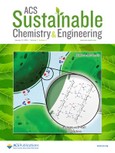
L. Stadler, M. Homafar, A. Hartl, S. Najafishirtari, M. Colombo, R. Zboril, P. Martin, M. B. Gawande, J. Zhi and O. Reiser, "Recyclable Magnetic Microporous Organic Polymer (MOP) Encapsulated with Palladium Nanoparticles and Co/C Nanobeads for Hydrogenation Reactions," ACS SUSTAINABLE CHEMISTRY & ENGINEERING, vol. 7, iss. 2, pp. 2388–2399, 2019.
DOI: 10.1021/acssuschemeng.8b05222, IF = 6.97
Abstract: Microporous organic polymers (MOPs) encapsulated with palladium nanoparticles (NPs) and immobilized on magnetic Co/C nanobeads show excellent activity in hydrogenation reactions of alkenes, alkynes, and nitro arenes with turnover frequencies (TOFs) up to 3000 h–1. The magnetic core of the nanobeads ensures an easy and fast recyclability for at least six consecutive runs by applying an external magnet to recapture the catalyst. The catalytic system reported here uses cross-linked toluene as a polymer structure and is readily prepared via a cost-efficient and versatile synthesis based on commercially available starting materials. The novel catalysts combine the advantages of a heterogeneous magnetic support with MOPs that prevent NPs from agglomeration or deactivation. In addition, the advantages of palladium NPs as exceedingly active catalyst due to their high surface-area-to-volume ratio are exploited. Furthermore, the polymeric structure can easily be varied by the change of the aromatic monomer. Introducing hydroxyl groups by 2,2′-biphenol as the monomer into the MOP, the leaching of palladium and cobalt from the catalyst can be reduced to a minimum.
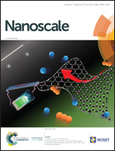
F. Queck, F. Albrecht, P. Mutombo, O. Krejci, P. Jelínek, A. McLean and J. Repp, "Interface dipoles of Ir(ppy)3 on Cu(111)," NANOSCALE, vol. 11, iss. 26, pp. 12695-12703, 2019.
DOI: 10.1039/c9nr00934e, IF = 6.970
Abstract: The interplay of adsorption geometry and interface dipoles of the transition-metal complex Ir(ppy)3 on Cu(111) was studied using low-temperature scanning probe microscopy and density-functional-theory calculations. We find that the orientation of the molecule's intrinsic dipole moment with respect to the surface has a strong influence on the total energy of the different configurations, where the most stable one has the molecular dipole moment pointing out of the surface plane along the surface normal. Adsorption-induced redistribution of charges results in an additional dipole moment that also points out of the surface plane for all configurations. Submolecularly resolved maps of the resulting local contact potential difference suggest that any in-plane dipole moment is very effectively screened.
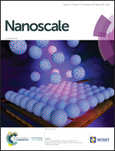
J. Vlček, L. Lapčík, M. Havrdová, K. Poláková, B. Lapčíková, T. Opletal, J. P. Froning and M. Otyepka, "Flow induced HeLa cell detachment kinetics show that oxygen-containing functional groups in graphene oxide are potent cell adhesion enhancers," NANOSCALE, vol. 11, iss. 7, pp. 3222-3228, 2019.
DOI: 10.1039/c8nr08994a, IF = 6.970
Abstract: A broader and quantitative understanding of cell adhesion to two-dimensional carbon-based materials is needed to expand the applications of graphene and graphene oxide (GO) in tissue engineering, prosthetics, biosensing, detection of circulating cancer cells, and (photo)thermal therapy. We therefore studied the detachment kinetics of human cancer cells HeLa adhered on graphene, GO, and glass substrates using stagnation point flow on an impinging jet apparatus. HeLa cells detached easily from graphene at a force of 9.4 nN but adhered very strongly to GO. The presence of hydrophilic functional groups thus apparently enhanced the HeLa cells’ adherence to the GO surface. On graphene, smaller HeLa cells adhered more strongly and detached later than cells with larger projected areas, but the opposite behavior was observed on GO. These findings reveal GO to be a suitable platform for detecting cells or establishing contacts, e.g. between graphene-based circuits/electrodes and tissues. Our experiments also show that the impinging jet method is a powerful tool for studying cellular detachment mechanisms and adhesion strength, and could therefore be very useful for investigating interactions between cells and graphene-based materials.
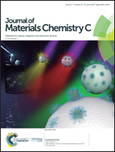
M. I. H. Mohideen, C. Lei, J. Tuček, O. Malina, F. Brivio, V. Kasneryk, Z. Huang, M. Mazur, X. Zou, P. Nachtigall, J. Čejka and R. E. Morris, "Magneto-structural correlations of novel kagomé-type metal organic frameworks," JOURNAL OF MATERIALS CHEMISTRY C, vol. 7, iss. 22, pp. 6692-6697, 2019.
DOI: 10.1039/c9tc01053j, IF = 6.641
Abstract: Here, we report the in situ formation of two novel metal organic frameworks based on copper and cobalt using tetrazole-5-carboxylate ethyl ester as the ligand synthesized by a hydrothermal route. Both MOFs show isostructural three-dimensional networks with kagomé tilling topology and show high chemical stability. Despite the iso-structural nature, both systems show distinct magnetic features. For the Cu-based kag-MOF system, the co-existence of energetically competing ferromagnetic and antiferromagnetic interactions resulted in the establishment of a long-range ferromagnetic order sustainable up to 52 K. On the contrary, dominant antiferromagnetic interactions identified in the Co-based MOF material were responsible for an antiferromagnetic order evolving below 7 K. Importantly, chemically different metallic ions gave rise to distinct magnetic ordering with different strength and temperature-sustainability. No dynamic magnetic phenomena were observed, implying that the concentration of the metal ions within the structure exceeded the percolation limit favoring the formation of the long-range magnetic order in the studied systems. Both designed kagomé-type MOFs were thus found to show a coexistence of high frustration and long range magnetic ordering with limited orbital quenching, resulting from the choice of the ligands and crystal arrangement. Thus, the results demonstrated the potentiality to effectively control and alter the magnetic features within the particular kagomé-type MOF lattice due to the chemical nature and structural incorporation of individual metal ions. The presented approach offers a promising strategy to further fine tune the physical characteristics of the MOF-based systems equipping them with more competitive potential and extending their application portfolio to other fields.
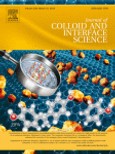
Y. Wang, Q. Li, P. Zhang, D. O'Connor, R. S. Varma, M. Yu and D. Hou, "One-pot green synthesis of bimetallic hollow palladium-platinum nanotubes for enhanced catalytic reduction of p-nitrophenol," JOURNAL OF COLLOID AND INTERFACE SCIENCE, vol. 539, iss. , pp. 161-167, 2019.
DOI: 10.1016/j.jcis.2018.12.053, IF = 6.361
Abstract: Bimetallic alloy nanostructures have garnered much attention due to their unique performances in catalytic processes. However, decline in catalytic activity over the life span has been a protracted limitation, ascribed largely to the aggregation or dissociation of particles and still remains a challenge for manufacturing bimetallic nanostructures of sufficient stability. Herein, a surfactant- and solvent-free greener strategy is presented for the fabrication of bimetallic palladium-platinum (PdPt) nanotubes (NTs), deploying lipid tubules as template and ascorbic acid as a reducing agent; the ensuing NTs comprise crystalline tubal nanostructures of ∼12 μm length, ∼500 nm cross-sectional diameter, and ∼57 nm tube wall thickness. When used for the catalytic reduction of p-nitrophenol (PNP), the PdPt NTs delivered improved kinetic apparent rate constants (kapp) compared to Pt NTs (0.5 min−1 vs. 0.2 min−1). Moreover, the NTs demonstrated high stability when used over multiple catalytic cycles thus opening up new potential routes for the fabrication of alloy NTs using lipid tubules as templates.

A. Pastorek, J. Hrnčířová, L. Jankovič, L. Nejdl, S. Civiš, O. Ivanek, V. Shestivska, A. Knížek, P. Kubelík, J. Šponer, L. Petera, A. Křivková, G. Cassone, M. Vaculovičová, J. E. Šponer and M. Ferus, "Prebiotic synthesis at impact craters: the role of Fe-clays and iron meteorites," CHEMICAL COMMUNICATIONS, vol. 55, iss. 71, pp. 10563-10566, 2019.
DOI: 10.1039/c9cc04627e, IF = 6.164
Abstract: Besides delivering plausible prebiotic feedstock molecules and high-energy initiators, extraterrestrial impacts could also affect the process of abiogenesis by altering the early Earth's geological environment in which primitive life was conceived. We show that iron-rich smectites formed by reprocessing of basalts due to the residual post-impact heat could catalyze the synthesis and accumulation of important prebiotic building blocks such as nucleobases, amino acids and urea.
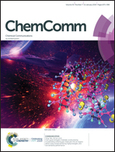
D. D. Chronopoulos, M. Medved’, P. Błoński, Z. Nováček, P. Jakubec, O. Tomanec, A. Bakandritsos, V. Novotná, R. Zbořil and M. Otyepka, "Alkynylation of graphene via the Sonogashira C–C cross-coupling reaction on fluorographene," CHEMICAL COMMUNICATIONS, vol. 55, iss. 8, pp. 1088–1091, 2019.
DOI: 10.1039/c8cc08492k, IF = 6.164
Abstract: We report successful grafting of alkynyl groups onto graphene via the Sonogashira reaction between fluorographene and terminal alkynes. Theoretical calculations revealed that fluorographene can efficiently bind and oxidize the palladium catalyst on electrophilic sites activated by fluorine atoms. This paves the way towards conductive and mechanically robust 3D covalent networks.
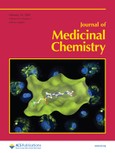
L. Fási, F. Di Meo, C. Kuo, S. Stojkovic Buric, A. Martins, N. Kúsz, Z. Béni, M. Dékány, G. T. Balogh, M. Pesic, H. Wang, P. Trouillas and A. Hunyadi, "Antioxidant-Inspired Drug Discovery: Antitumor Metabolite Is Formed in Situ from a Hydroxycinnamic Acid Derivative upon Free-Radical Scavenging," JOURNAL OF MEDICINAL CHEMISTRY, vol. 62, iss. 3, pp. 1657-1668, 2019.
DOI: 10.1021/acs.jmedchem.8b01994, IF = 6.054
Abstract: Cancer cells generally possess higher levels of reactive oxygen species than normal cells, and this can serve as a possible therapeutic target. In this proof-of-concept study, an antioxidant-inspired drug discovery strategy was evaluated using a hydroxycinnamic acid derivative. The processing of oxidized mixtures of p-coumaric acid methyl ester (pcm) revealed a new antitumor lead, graviquinone. Graviquinone bypassed ABCB1-mediated resistance, induced DNA damage in lung carcinoma cells but exerted DNA protective activity in normal keratinocytes, and modulated DNA damage response in MCF-7 cells. The cytotoxic effect of pcm in MCF-7 cells was potentiated under H2O2-induced oxidative stress, and the formation of graviquinone was confirmed by Fenton’s reaction on pcm. In silico density functional theory calculations suggested graviquinone as a kinetic product of pcm-scavenging •OH radicals. Our results demonstrate the pharmacological value of an in situ-formed, oxidative stress-related metabolite of an antioxidant. This might be of particular importance for designing new strategies for antioxidant-based drug discovery.
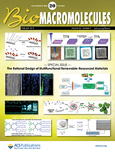
M. Magro, D. Baratella, E. Bonaiuto, J. de Almeida Roger, G. Chemello, S. Pasquaroli, L. Mancini, I. Olivotto, G. Zoppellaro, J. Ugolotti, C. Aparicio, A. P. Fifi, G. Cozza, G. Miotto, G. Radaelli, D. Bertotto, R. Zboril and F. Vianello, "Stealth Iron Oxide Nanoparticles for Organotropic Drug Targeting," BIOMACROMOLECULES, vol. 20, iss. 3, pp. 1375–1384, 2019.
DOI: 10.1021/acs.biomac.8b01750, IF = 5.667
Abstract: The ability of peculiar iron oxide nanoparticles (IONPs) to evade the immune system was investigated in vivo. The nanomaterial was provided directly into the farming water of zebrafish (Danio rerio) and the distribution of IONPs and the delivery of oxytetracycline (OTC) was studied evidencing the successful overcoming of the intestinal barrier and the specific and prolonged (28 days) organotropic delivery of OTC to the fish ovary. Noteworthy, no sign of adverse effects was observed. In fish blood, IONPs were able to specifically bind apolipoprotein A1 (Apo A1) and molecular modeling showed the structural analogy between the IONP@Apo A1 nanoconjugate and high-density lipoprotein (HDL). Thus, the preservation of the biological identity of the protein suggests a plausible explanation of the observed overcoming of the intestinal barrier, of the great biocompatibity of the nanomaterial, and of the prolonged drug delivery (benefiting of the lipoprotein transport route). The present study promises novel and unexpected stealth materials in nanomedicine.

E. Heřmánková, M. Zatloukalová, M. Biler, R. Sokolová, M. Bancířová, A. G. Tzakos, V. Křen, M. Kuzma, P. Trouillas and J. Vacek, "Redox properties of individual quercetin moieties," FREE RADICAL BIOLOGY AND MEDICINE, vol. 143, iss. , pp. 240-251, 2019.
DOI: 10.1016/j.freeradbiomed.2019.08.001, IF = 5.657
Abstract: Quercetin is one of the most prominent and widely studied flavonoids. Its oxidation has been previously investigated only indirectly by comparative analyses of structurally analogous compounds, e.g. dihydroquercetin (taxifolin). To provide direct evidence about the mechanism of quercetin oxidation, we employed selective alkylation procedures for the step-by-step blocking of individual redox active sites, i.e. the catechol, resorcinol and enol C-3 hydroxyls, as represented by newly prepared quercetin derivatives 1–3. Based on the structure-activity relationship (SAR), electrochemical, and computational (density functional theory) studies, we can clearly confirm that quercetin is oxidized in the following steps: the catechol moiety is oxidized first, forming the benzofuranone derivative via intramolecular rearrangement mechanism; therefore the quercetin C-3 hydroxy group cannot be involved in further oxidation reactions or other biochemical processes. The benzofuranone is oxidized subsequently, followed by oxidation of the resorcinol motif to complete the electrochemical cascade of reactions. Derivatization of individual quercetin hydroxyls has a significant effect on its redox behavior, and, importantly, on its antiradical and stability properties, as shown in DPPH/ABTS radical scavenging assays and UV–Vis spectrophotometry, respectively. The SAR data reported here are instrumental for future studies on the oxidation of biologically or technologically important flavonoids and other polyphenols or polyhydroxy substituted aromatics. This is the first complete and direct study mapping redox properties of individual moieties in quercetin structure.
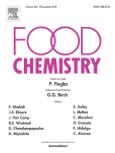
B. Lapčíková, I. Burešová, L. Lapčík, V. Dabash and T. Valenta, "Impact of particle size on wheat dough and bread characteristics," FOOD CHEMISTRY, vol. 297, iss. , pp. 124938, 2019.
DOI: 10.1016/j.foodchem.2019.06.005, IF = 5.399
Abstract: There was studied dough made from refined white and brown wheat flours of different granulometry by means of mechanical, thermal analysis and rheological testing. Observed results were confronted with textural properties of breads. Obtained data confirmed that fine refined white flour dough had high ability to elongate and accumulate stress, in contrary, brown fine flour dough exhibited weaker ability to accumulate stress. Observed increase of the complex viscosity associated with the gelatinization was the fastest in coarse dough, where it gained also the highest peak viscosity. The highest water content liberated was found from fine brown flour bread. This triggered lower water availability for hydration of starch granules in the bread during baking process, thus promoting higher moisture loss affecting thus the overall expansion and porosity of the bread matrix. The latter effect was ascribed to the presence of bran particles in brown flour.

I. Safarik, S. Mullerova and K. Pospiskova, "Semiquantitative determination of food acid dyes by magnetic textile solid phase extraction followed by image analysis," FOOD CHEMISTRY, vol. 274, iss. , pp. 215-219, 2018.
DOI: 10.1016/j.foodchem.2018.08.125, IF = 5.399
Abstract: Magnetic textile solid phase extraction, based on the use of magnetically modified non-woven textile impregnated with chitosan, was successfully employed for the preconcentration of acid food dyes from water solutions. The photos of textile squares with the adsorbed dye were taken with a mobile phone. The image analysis of the photos was performed using appropriate freeware. The values of saturation, obtained through the HSB color space, were proportional to the dye concentration in the analyzed samples. Described inexpensive, simple and elution free assay enables analysis of dyes concentration in various solutions. This novel method has a potential to be a useful alternative to existing semiquantitative determination procedures, especially for dyes analysis.
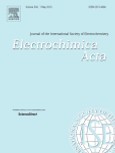
J. Langmaier, J. Skopalová, T. Navrátil and Z. Samec, "Detection of antimuscarinic agents tolterodine and fesoterodine and their metabolite 5-hydroxymethyl tolterodine by ion transfer voltammetry at a polarized room-temperature ionic liquid membrane," ELECTROCHIMICA ACTA, vol. 304, iss. , pp. 54-61, 2019.
DOI: 10.1016/j.electacta.2019.02.086, IF = 5.313
Abstract: Ion transfer voltammetry at a polarized hydrophobic room temperature ionic liquid (RTIL) membrane was used for evaluation of the diffusion coefficients and the standard Gibbs energies of ion transfer of the protonated antimuscarinic agents tolterodine (TOL), fesoterodine (FES), and their common metabolite 5-hydroxymethyl tolterodine (5-HMT), as well as for their determination in the aqueous samples and urine. An analysis of the pH effect provided the parameters characterizing their lipophilicity both in their ionic and neutral forms confirming a remarkably low lipophilicity of 5-HMT. The application of the ion transfer voltammetry for a monitoring of the enzymatic hydrolysis of FES to 5-HMT was demonstrated. For determination of protonated TOL, FES, and 5-HMT in the aqueous samples, linear calibration dependences were plotted in the range 2.0–12.5 μmol L−1 with the mean limit of detection (LOD) 0.43 μmol L−1. Analogous linear calibration dependences were constructed for 10times diluted urine spiked with 2.0–12.5 μmol L−1 TOL, FES, and 5-HMT with the mean LOD 0.65 μmol L−1. Unfortunately, determination of 5-HMT in diluted urine samples was interfered by an unknown ionic urine component, which somewhat increased its particular LOD.
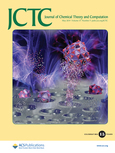
P. Kührová, V. Mlýnský, M. Zgarbová, M. Krepl, G. Bussi, R. B. Best, M. Otyepka, J. Šponer and P. Banáš: Improving the Performance of the Amber RNA Force Field by Tuning the Hydrogen-Bonding Interactions, JOURNAL OF CHEMICAL THEORY AND COMPUTATION vol. 15, iss. 5, pp. 3288-3305, 2019.
DOI: 10.1021/acs.jctc.8b00955, IF = 5.313
Abstract: Molecular dynamics (MD) simulations became a leading tool for investigation of structural dynamics of nucleic acids. Despite recent efforts to improve the empirical potentials (force fields, ffs), RNA ffs have persisting deficiencies, which hamper their utilization in quantitatively accurate simulations. Previous studies have shown that at least two salient problems contribute to difficulties in the description of free-energy landscapes of small RNA motifs: (i) excessive stabilization of the unfolded single-stranded RNA ensemble by intramolecular base–phosphate and sugar–phosphate interactions and (ii) destabilization of the native folded state by underestimation of stability of base pairing. Here, we introduce a general ff term (gHBfix) that can selectively fine-tune nonbonding interaction terms in RNA ffs, in particular, the H bonds. The gHBfix potential affects the pairwise interactions between all possible pairs of the specific atom types, while all other interactions remain intact; i.e., it is not a structure-based model. In order to probe the ability of the gHBfix potential to refine the ff nonbonded terms, we performed an extensive set of folding simulations of RNA tetranucleotides and tetraloops. On the basis of these data, we propose particular gHBfix parameters to modify the AMBER RNA ff. The suggested parametrization significantly improves the agreement between experimental data and the simulation conformational ensembles, although our current ff version still remains far from being flawless. While attempts to tune the RNA ffs by conventional reparametrizations of dihedral potentials or nonbonded terms can lead to major undesired side effects, as we demonstrate for some recently published ffs, gHBfix has a clear promising potential to improve the ff performance while avoiding introduction of major new imbalances.
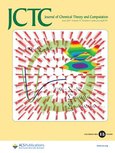
A. Cesari, S. Bottaro, K. Lindorff-Larsen, P. Banáš, J. Šponer and G. Bussi: Fitting Corrections to an RNA Force Field Using Experimental Data, JOURNAL OF CHEMICAL THEORY AND COMPUTATION vol. 15, iss. 6, pp. 3425-3431, 2019.
DOI: 10.1021/acs.jctc.9b00206, IF = 5.313
Abstract: Empirical force fields for biomolecular systems are usually derived from quantum chemistry calculations and validated against experimental data. We here show how it is possible to refine the full dihedral-angle potential of the Amber RNA force field by using solution NMR data as well as stability of known structural motifs. The procedure can be used to mix multiple systems and heterogeneous experimental information and crucially depends on a regularization term chosen with a cross-validation procedure. By fitting corrections to the dihedral angles on the order of less than 1 kJ/mol per angle, it is possible to increase the stability of difficult-to-fold RNA tetraloops by more than 1 order of magnitude.
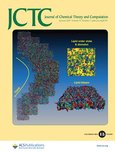
H. Kruse, P. Banáš and J. Šponer: Investigations of Stacked DNA Base-Pair Steps: Highly Accurate Stacking Interaction Energies, Energy Decomposition, and Many-Body Stacking Effects, JOURNAL OF CHEMICAL THEORY AND COMPUTATION vol. 15, iss. 1, pp. 95-115, 2019.
DOI: 10.1021/acs.jctc.8b00643, IF = 5.313
Abstract: The stacking energies of 10 unique B-DNA base-pair steps were calculated with highly accurate quantum chemistry and used as reference values in a thorough benchmark of (dispersion-corrected) DFT, wave function methods, tight-binding methods, and different force fields, including charge variants thereof. The reference values were computed using a focal-point energy function based on extrapolated explicitly correlated MP2-F12 and conventional CCSD(T) data at the triple-ζ level. A collection of 29 different density functionals, sometimes with multiple dispersion corrections (D3(BJ), D3M(BJ), and VV10) were evaluated, including recent functionals like B97M-V, ωB97M-V, and SCAN-D3(BJ), which perform excellently. The double-hybrid DSD-BLYP-NL was found to be the best DFT method. Common wave function methods (MP2, SCS-MP2, and MP2.5) and the SNS-MP2 protocol were tested as well, where only the latter and DLPNO-CCSD(T)/CBS were competitive with DFT. The tight-binding methods DFTB3-D3 and GFN-xTB revealed a comparatively low accuracy. The AMBER force field outperformed CHARMM and GROMOS but still showed systematic gas-phase overbinding, which could be traced back to the electrostatic term, as revealed by comparison of different sets of point charges. High-order SAPT, e.g., SAPT2 + 3δ(MP2), was not only benchmarked but also used to study the nature of the stacking interactions to high accuracy. The δ(MP2) term turned out to be crucially important to reach high accuracy. Finally, we investigated four-body stacking effects with DLPNO-CCSD(T) and DFT, which were found to be significant and strongest for the CpC base-pair step where they reached almost 30% of the total stacking energy.


